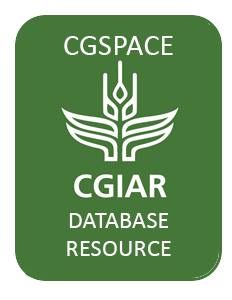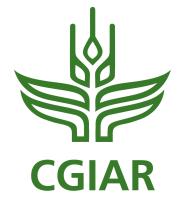Resource information
Send a Cow (SAC) is a nongovernmental organization (NGO) that has been working in Kenya since 1996. It focuses on groups of smallholder farmers, providing them with training in sustainable agriculture and improved animal management. SAC is mostly active in western Kenya, one of the country's most populated and poorest region. The population density for this region ranges from 337 to 1,300 inhabitants per km² with an average density of 590 people per km2 (Kenya Ministry of Agriculture and Rural Development, 2001; KNBS, 2010). Over 50% of the people in this area are dependent on agriculture and live below the poverty line of US$1/day (Iruria et al., 2009; Makokha et al., 2007). In 2013, SAC started the “Wealth Creation Project” (WCP) in Busia, Kakamega, Siaya, and Bungoma Counties in the Western Province of Kenya. The project aims to increase the agri-production systems of 9,500 smallholder farming families by diversifying their diets and giving them an additional source of income.
Farmers are provided with training in animal management and sustainable agricultural practices throughout the project. After comprehensive trainings and farm asset evaluation, farmers were given livestock. The gift of one improved livestock head to each rural, poor family created wealth and security for them, contributing to wealth creation by improving the quality of life and offering a potential pathway out of poverty (Nicholson et al., 2003). The WCP adds to the increasing number of smallholder farmers who keep improved dairy cows as a source of income and financial security. In 2007, it was estimated that 99,000 smallholder dairy farmers in the Western Province were keeping about 192,300 improved dairy cattle (Muriuki, 2011).
Land has become the main limiting factor in this already densely populated region, due to continuous population growth and land fragmentation. The small land size per farm (1 acre on average), which is further subdivided in each generation, is a major obstacle to providing adequate energy and protein intake for a dairy cow and a household. Due to limited land size, farmers put most of the available land under food crops and dedicate little area to planted fodder. Researching on the land area that is necessary to adequately feed a productive dairy cow and a family is essential for effective decision making and for training the farmers in sustainable feed production and farm planning.
Therefore, SAC collaborated with CIAT in assessing the land requirement for a dairy cow under different feeding regimes and explored the trade-offs of these feeding strategies in terms of food vs. feed land requirements, environmental impacts, and profitability. This research field is a focus area in farming systems research and trade-off analysis, both areas where CIAT has expertise.


